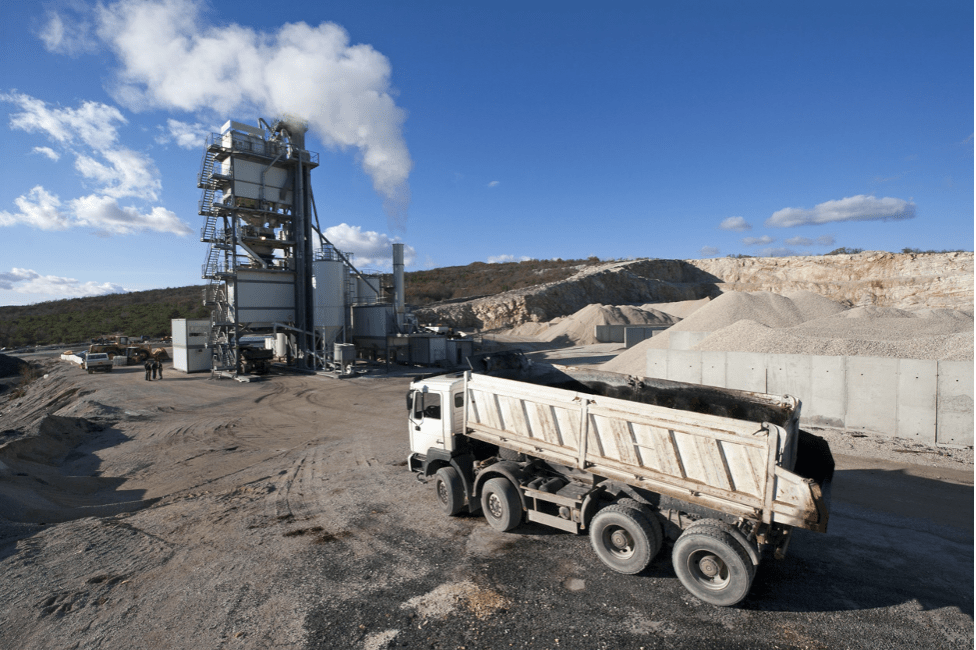March 02, 2023
How to Optimize your Asphalt Plant with Data
Using data from your plant software can improve virtually every aspect of the asphalt production process, from materials and energy use to plant performance.

Effective data use can help plant operators reduce waste, cut operating costs and improve the overall efficiency of the asphalt production process.
Increasingly, data is being seen as the new oil—a new type of energy and asset that can maximize organizations’ effectiveness and business opportunities.
But, as numerous studies have shown, while we’ve created about 90 percent of the world’s data in the last decade—with a whopping 2.5 quintillion bytes of data created every day—we’re only using about one percent of that data effectively. Further, only four percent of corporations claim to have a “highly sophisticated” approach to leveraging data, according to research from EY.
Used correctly, asphalt plant data can be a powerful tool in making sure plant managers are getting the most from their operations and improving the overall efficiency of the asphalt production process.
“Effectively using your plant data leads to better operations and better transparency of what’s actually taking place in near real-time,” says Mark McGaughey, ASTEC Digital’s Director of US Operations.
But with industrial automation solutions generating so much data every hour of every day, it can feel overwhelming for plant managers to figure out where to start. According to McGaughey, plant operators and managers can focus first on carefully monitoring their plants’ day-to-day operations for any pain points that data could address, such as fuel overuse, mix challenges or inefficient truck loads.
Effective data use can help plant operators and managers reduce waste and cut operating costs, improve site safety, reduce downtime and more, McGaughey says. With information on raw material — whether aggregates or asphalt — and fuel use at their fingertips, plant operators can determine if they’ve been using too much and buy less to produce the same product. Further, data on the running mix temperature could reveal that it’s a few degrees hotter than it should be, prompting the operator to lower the burner and save on energy costs over time.
Data on trucking loads, too, could be revealing, in terms of how many cycles are being made per day, how long it took to complete each cycle, how many tonnes an hour are arriving at the job and whether the trucks are appropriately filled when they leave the site. McGaughey also cites emissions figures as particularly relevant for operators, given their need to comply with government regulations—monitoring this data could catch a small issue before it becomes an enforcement matter.
With data from ASTEC Digitals’ DrumTronic system, plant operators can conduct a “forensic analysis” of any small plant performance issues before they become a bigger problem,
McGaughey says, citing an example of noticing an issue with the asphalt mix. “Is the plant performing like it is supposed to? Is it something else way down in the system that caused the issue? You can use the plant data to determine when it started and investigate from there.”
Plant operators can also set clear maintenance schedules with DrumTronic, making downtime something that is planned rather than a major business disruption, McGaughey says. “The software shows how many hours a particular device has been running, so if they wanted to use that for maintenance purposes, they could say, after 250 hours, I need to service this and reset the clock, so they know when it’s time to do that.”
While data can be the key to unlocking plant improvements, it requires information architecture to help plant operators understand what they’re seeing. “There’s a perception that data is somehow alive, that it does something,” said Neal Fishman, author of Smarter Data Science: Succeeding with Enterprise-Grade Data and AI Projects, in a September 2020 interview with IBM. “But for me, data is inert: it’s not self-aware, and it’s not self-organizing. This is why an information architecture is imperative to helping… applications make data valuable.”
ASTEC Digitals’ MixManager app for plant management and asphalt quality control, which is part of the DrumTronic plant management software, generates valuable reports that plant operators can use to better understand their operations — from standard reports on daily and live totals and trucking data to reports customized to the needs of the operator, such as a per-mix materials report that shows the total aggregate or raw materials used, fuel usage and emissions. ASTEC Digitals’ team members are also available to help plant operators understand their plant data, if necessary.
Plant managers who can harness the data generated by their plant software will be the ones who separate themselves from the pack and stand out as industry leaders.
“They can see inside the operations at the plant in a way they’ve never seen before,” McGaughey says. "It’s very powerful.”